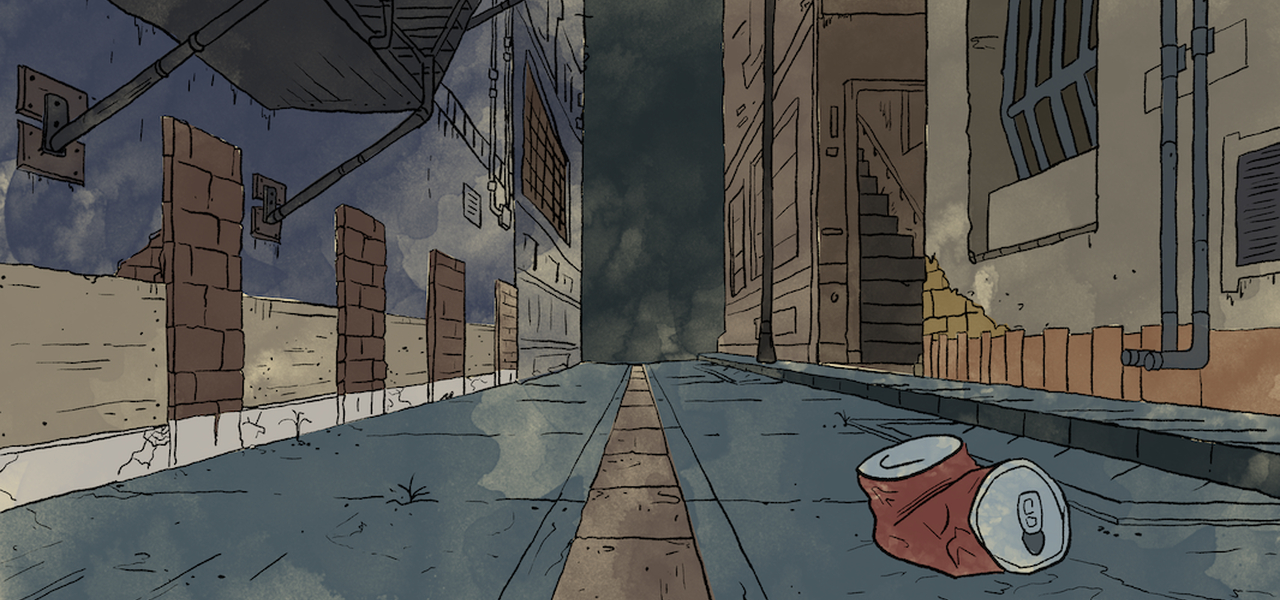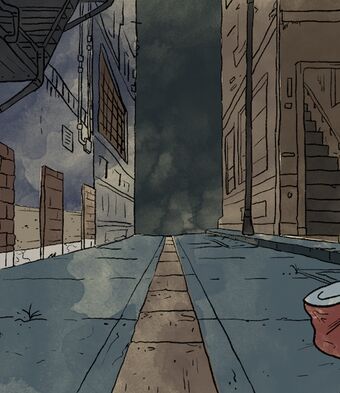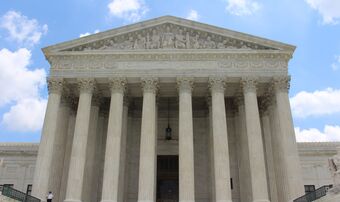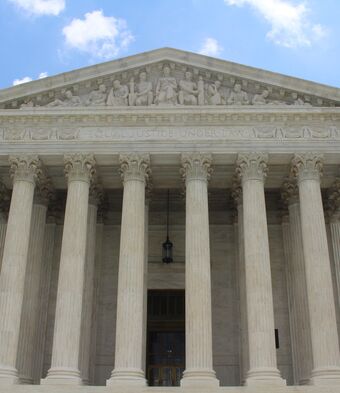In addressing the issue of backstreet abortion, Parliament’s response was to legalise abortion in certain circumstances to ensure it could be carried out safely. But was this really justified, and did it solve the problem of backstreet abortions?
Here are four key reasons why we might question this approach.
1. Just because the law is being broken, that does not mean the law itself is wrong.
This is a more general principle, but an important one: is a law serving its purpose if people are breaking it?
If a harmful practice were occurring in large numbers in today’s society, it would be the role of the State to examine the cause and attempt to address whatever systemic issues might be contributing to people breaking the law.
For example, in Britain it is a criminal offence to self-administer the Class A drug heroin. Yet heroin use is a widespread problem, and has increased from around 5,000 heroin users in 1975 to an estimated 281,000 in England and over 50,000 in Scotland today.
The right role of law and policy makers in response to such prevalent illegal drug use is to examine the underlying causes and possible preventative measures. Questions should be asked such as: ‘What leads someone to start using heroin? Is there a common theme in the factors leading people to heroin use?’ How can we help prevent people from falling into heroin addiction?’ The reason this preventative approach is adopted is because heroin consumption causes harm and the State therefore has an interest in protecting society.
But what would happen if lawmakers ignored causation altogether and decided the law against heroin was outdated? What if Parliament overturned the law, legalised heroin, and legislated to allow GPs to administer heroin in safe amounts, in order to avoid ‘unsafe heroin use’? Would the numbers of users suddenly decrease? Would the harm from heroin disappear? Would it address any of the issues that lead people to drug use or addiction?
The analogy to abortion is clearly flawed, but it hopefully illustrates the point: just because a law is being broken, that does not mean the law itself is wrong. It means it is either not being enforced properly, or there are other factors which are leading people to break the law in higher numbers. It is the duty of lawmakers to address both factors. This is especially true in the criminal law, which is designed to protect people and send a clear message about what is harmful.
Of course, one could argue that the key difference between heroin use and abortion is that abortion is not harmful, and therefore there is no reason for the State to protect any individual from it.
Yet this is a disputable claim for two reasons. Firstly, abortion does not only involve one individual; it involves the intentional act of ending the life of a human being. Abortion therefore causes ‘harm’ to a preborn baby in that it is, arguably, always in the baby’s interests to live.
Of course, whether a human being in utero is a person, possessing the right to life, is where the main dispute lies in the abortion debate. But the fact that there has always been public interest in granting foetal life a degree of protection in the womb demonstrates that some harm is attributed to the act of abortion, and this harm is perceived as growing in significance as the baby develops. This is demonstrated today by public discomfort with abortion after 24 weeks. For example, only 1% of respondents in a 2017 poll want the time limit to be extended beyond 24 weeks, and many favour a reduction in the limit. In fact, polling has consistently shown that women, in particular, want increased restrictions on abortion.
And there is also the issue of the harm that abortion potentially causes to a woman. Although this is a much disputed area, abortion at the very least exposes women to potential harm, such as the fact that around 1 in 20 women undergoing an early medical abortion will need subsequent surgery for haemorrhage or to remove foetal remains left inside the uterus. There is also a solid link between abortion and subsequent pre-term birth. This is not to mention the impact of abortion on women with pre-existing mental health conditions, which can be exacerbated by the abortion process. In some cases, even so-called ‘safe’ abortion has been known to cause death.
If it was indisputable that abortion is entirely harmless, which many advocates for abortion seek to demonstrate, then it would perhaps make more sense that Parliament sought in 1967 to overhaul the existing law. But given the potential harm of abortion, particularly to preborn life, it would seem to be in the interests of 1960s lawmakers to examine carefully why there was a need for abortion outside the criminal law and whether any alternative policy options were available.
Yet a preventative approach was not taken and the Parliament of the 1960s did nothing to address the potential factors leading women to resort to backstreet abortions.
2. Legalising abortion did not address the reasons women were seeking backstreet abortions
In the 1960s, rather than addressing the reasons women were resorting to backstreet abortions, it seems Parliament’s response was to ignore the question altogether. Instead, they simply sought to reduce the numbers of backstreet abortions occurring – thereby fixing a temporary plaster onto a gaping wound.
Without any existing rigorous investigation into the cause of backstreet abortions, it is difficult to determine why women were resorting to such methods. Most of the evidence derives from the period before the Second World War, when abortion rates were even higher than at the time the 1967 Act was passed.
Dr Tanya McIntosh, in her case study examining the prevalence of abortion in Sheffield in 1920-40, has surmised that the reasons for high backstreet abortion rates in the 1920s and 30s were invariably economic ones. This correlates with other evidence, for example in 1927 the Midwives institute stated that the ‘predominant cause [of abortion]…was financial anxiety’ and they argued that ‘economic security would make abortion an unknown thing.’[1]
Evidence to the Birkett Committee shows that around a third of working class, married women in Kensington who had had abortions ‘expressed their regret that the stress of economic circumstances made them feel it a moral obligation to prevent the conception of the children whom their maternal instinct desired’.
The prevalence of abortion in this period is also attributed to lack of effective birth control. According to Dr Mcintosh, cultural attitudes to birth control, as well as accessibility to contraception, were factors affecting high abortion rates in Sheffield, where sepsis deaths from abortion were particularly high.
In the 1930s, working class families in Sheffield faced high unemployment, leading to ‘economic stress and uncooperative spouses’.[2] Men were reluctant to use contraception, which was not widely available. This experience supports the view of historian Simon Szreter, who argues that the prevalence of abortion was a consequence of cultural attitudes, arguing that ‘abortion was most prevalent in patriarchal communities’ and was an ‘expression of female isolation and weakness rather than strength and community.[3]’
Information and availability were also influential factors, as abortion was ‘cheaper than continual use of contraceptive aids’[4]. One study in 1930 stated that ‘If birth control information were made available to working-class mothers…the main cause of the prevailing high rate of abortion would be removed, and maternal health would be greatly improved in consequence.’[5]
Yet the Parliament of 1967 did nothing to address whether either poverty or attitudes to contraception were a potential cause of abortion. One might wonder, why was this, and is it possible there was an ideological pursuit influencing the drive to change the law?
Eugenics in the 20th Century
What is significant about those who fought to reform Britain’s abortion law is that factors around poverty or other social issues surrounding abortion were never at the forefront of their campaigning.
The attempt to reform Britain’s abortion law began in the 1930s, when a group of men and women formed the Abortion Law Reform Association (ALRA). Alongside concern over maternal mortality rates, those pushing for reform of the law were heavily influenced by the eugenics movement. Several of ALRA’s founders were also members of the Eugenics Society and were influenced by male eugenicists such as Havelock Ellis, Bertrand Russell and Edward Carpenter. Ellis, a sexologist, believed that in order for men to be able to mate freely, as part of eugenic improvement, women needed birth control and abortion.
According to the academic Ann Farmer, ALRA members, such as Dora Russell and Stella Browne, saw humans as merely part of a chain of evolution. Thus, those deemed unfit could be disposed of in order to ensure population control and the continuation of a superior race. Abortion and birth control were a key part of this pursuit.
Despite the fact that the founders of ALRA had perceived private sexual liberation and eugenics as a means to obtain the socialist political utopia they dreamed of in the 1930s, later members were not chasing legalised abortion in search of a utopian state.
Yet it was still eugenic-influenced concerns that gave their campaign a resurgence in the 60s in the form of the thalidomide controversy. This put abortion back on the agenda; it was perceived to be an appropriate measure to adopt in response to the numbers of babies being born with abnormalities caused by the morning sickness drug.
Alan Henry Clarke, in his thesis on abortion reform, argues that 'It was the thalidomide tragedy which the reformers see as the turning point in public opinion and as the stimulus for real "professionalisation" of the reform movement.'[6] This is supported by two members of ALRA, who wrote about the events leading to the passage of the Act: ‘The drug thalidomide was the motor that re-invigorated the ALRA and which paved the way for reform.'[7]
Indeed, this was the motivating factor that led Diane Munday, ALRA’s chairwoman, to join the organisation. Similarly, ALRA member Madeline Simms has stated: ‘Shortly after I joined ALRA the thalidomide tragedy occurred and this caused me and many others to become serious and active about abortion law reform instead of just being passive members of the association.’[8]
David Paintin, one of the gynaecologists in ALRA, later wrote the following: “I was persuaded by Dugald Baird’s reasons for providing safe abortion and agreed with him that the moral value of the foetus was small when compared with the health and wellbeing of the woman and her children. Years later, I realised that he had been influenced as a young man by the eugenic ideas expressed by intellectuals such as Bertrand Russell and Julian Huxley. As a gynaecologist, his concern was the needs of individual women with unwanted pregnancies but, as a social scientist, his objective was to improve the health of the community as a whole.”[9]
Thus, despite common misconception, abortion reform was not primarily a result of changing sexual attitudes in the 60s, nor was it part of the women’s rights movement. Indeed, there is dispute over how much the 60s amounted to a sexual revolution at all, and it was not until the 1970s that abortion became a mainstream part of feminist discourse. Abortion reform was spearheaded by individuals influenced by eugenic ideals, many of which were shared by those in Parliament at the time and by society at large. It is only now that the idea of female emancipation and the necessity of abortion are synonymous.
Furthermore, the presumption that the Abortion Act 1967 was primarily conducted as a response to backstreet abortions is questionable; even campaigners themselves acknowledge the other motivations that catapulted their campaign to success.
3. Eradicating backstreet abortion did not lead to greater equality for women
One of the most tragic aspects of the abortion reform campaign has meant that the factors leading women to seek abortion have still not been addressed.
This is evident when examining the relationship between abortion and poverty. The impact of poverty on the abortion rate today further demonstrates that this fundamental inequality was never addressed by simply making abortions ‘safer’. The problem is that the links between abortion and social factors are, at present, mostly anecdotal, but surely sufficient to be worth more investment in research.
Abortion statistics have only recently started collecting data on social deprivation and abortion rates. The latest statistics show that “The trend of abortion rates increasing as levels of deprivation increase remains consistent when the abortion data is studied at both regional and national level.”[10] In London, for example, the abortion rate is highest in the most impoverished boroughs in the capital: Barking and Dagenham, Lewisham, Waltham Forest, Croydon and Enfield.
Anecdotally, policies such as the two-child benefit cap have been linked to abortion rates. One study found that 23% of parents affected by the two-child limit struggled to pay their basic living costs, and one parent, quoted in the study, said, “I am currently pregnant with my third child after contraception failure and having to consider termination.” Another said “My third pregnancy wasn’t planned but I was too far gone before I knew I was pregnant to even think about other options (abortion). I knew I wouldn’t be able to afford my third child because of this policy”.
Similarly, austerity has been blamed for pushing abortion rates to a 10-year high – a view that is even espoused by BPAS. BPAS’ spokesperson has stated that an economically disadvantaged woman faces a choice 'between falling into deeper poverty or having an abortion that she may otherwise not want'. This is partly also attributed to Government closures of family planning clinics, and a lack of access to contraception and advice. Both factors are heavily reminiscent of 1930s Sheffield.
A tragic account in The Guardian details the impact of this pressure on women:
“I got pregnant, accidentally, two years ago. My boyfriend and I desperately wanted a child, but knew we had nowhere to live and no means to support it. Instead of living in fear of raising it in what could ultimately have been poverty, in a society that refused to help support us, we had no choice but to end the pregnancy. I’ve been in grief counselling for a year to come to terms with that decision.”
Some might argue that we need both: free, safe and legal abortion but also policies that work towards a society where no one’s decision-making is influenced by poverty. Fifty years after the Abortion Act, when conditions are vastly better for the majority of people living in Britain than the 1960s, yet abortion is at one of the highest rates it has ever been, would suggest otherwise. Legalising abortion did nothing to resolve the fundamental inequalities that continue to lead women to take this course of action, whether they want to or not.
A multitude of inequalities
Even if women’s financial circumstances were addressed, evidence suggests that inequalities driving abortion go further than pure economic concerns. Despite a great paucity of research on the reasons women seek abortions, some evidence demonstrates that there are multivariate factors influencing women’s decision making. They may be seeking abortions due to: controlling family size or timing of children (which in itself could be motivated by a number of factors), poverty, pursuit of education and career, and relationship issues.
One study in 1987 corroborates this: “Three-quarters said that having a baby would interfere with work, school or other responsibilities, about two-thirds said they could not afford to have a child and half said they did not want to be a single parent or had relationship problems.”
Another study in Denmark found that, where women were ambivalent about their decision to have an abortion, they cited personal finances, occupational and educational concerns and social pressure. A further weight was lack of support from male partners, and in 16% of cases the decision to abort was made by the partner. 47% of the participants indicated “they would have changed their decision given different personal circumstances, including partner support or improved socioeconomic conditions.”
Indeed, one of the major factors influencing women’s decision making is their relationship with their partner. A study exploring ambivalence in women’s decision-making around abortion in Britain found that 30% of women who delayed obtaining an abortion for 7 days or more stated that ‘my relationship with my partner broke down’, 20% said ‘I was hoping/waiting to see if my partner would support me in having a baby’ and 11% said “My partner changed his mind about having a baby”
Abortion does not make women equal
Legalising backstreet abortions patently did not solve the systemic conditions that led women to seek them in the first place. This is why, nowadays, an Oxford student juggling studies with motherhood is seen as newsworthy rather than a normative celebration of the progress women have made.
When the Joseph Rowntree Foundation looked into factors that influenced young women’s decisions about abortion, they found that “Young women's expectations about what can be achieved through education and success in the world of work affect their decision-making.” This is why one participant in the study stated, “There was no question of me keeping it because I knew I was going to go to university…I’d had a good education and I had a career path to go down, it was all laid out for me.”
As Ann Farmer has noted, “Abortion cannot produce equality – only the chance to compete with men on their (childless) terms, and only temporarily. Once a woman has children... she will have to accommodate herself to the system, instead of the system accommodating the perfectly natural sequence of pregnancy, birth and child care”.[11]
The idea that legalising abortion in 1967 fundamentally contributed to the eradication of inequality for women, and gave them emancipation from male dominance, is easily disputed. It is beyond comprehension why no one questions the status quo: why we cannot create a world where abortion no longer exists and women are truly equal; where society genuinely supports a woman as she raises a baby whilst also able to excel in education and career; where economic factors or lack of supportive partners are never a factor leading a woman to feel abortion is her only option; where no woman feels she cannot bring a baby into the world because she won’t be able to care for it adequately.
4. Backstreet abortions haven’t been eradicated in Britain
Another bizarre and tragic consequence of moving abortion into the public realm is that campaigners are now increasingly focused on making it as private as possible.
One of the most significant changes to abortion practice since 1967 has been the increase in medical abortion, and the recent decision by the Government to allow women to take abortion pills at home.
The latest guidance on abortion services produced by NICE indicates that abortion will likely in the future move away from in-person consultations with a medical professional. This involves a consultation with a professional over a video call, and an increasing use of telemedicine to administer abortion pills. During the coronavirus pandemic, this model became a reality, and women were sent abortion pills in the post, without an accurate gestational scan to ensure their safety. In one instance, a woman aborted a baby at 28 weeks; one can only imagine the traumatic experience entailed in delivering a baby of that gestation at home.
If this practice continues, we could see a trend where more and more women are having abortions outside of clinical settings. Whilst a woman remains under the duty of care of a medical practitioner in any procedure, there are very serious questions around safeguarding and the safety of women undergoing abortions if clinical oversight is further removed.
For example, without a medical professional to screen women and ensure they are not being coerced into an abortion, how will domestic abuse be adequately detected? At the moment women are supposed to be offered counselling at each stage of the care pathway. Where will women, particularly those who are ambivalent about their decision, be able to discuss their concerns? Without face-to-face contact with a health professional, and the opportunity for an accurate gestational scan, how many more women will endure the experience of delivering a very viable baby into the toilet at home?
It’s unclear how home abortions are significantly distinguishable from backstreet abortions, aside from the fact that they’re now sanctioned by the State and endorsed by abortion campaigners, who claim they are acting in the interests of women. When pressed as to the mental health implications of this policy, the Government have simply said they have ‘not examined the psychological impact of passing a foetus at home’.
Regardless of your personal view on the morality of abortion, concerns about moving abortion increasingly into the private sphere ought to be obvious. Home abortions may allow women privacy, but that comes at a potentially high cost. We ought to be asking ourselves the question why we legislated to move abortion into ‘safe’ clinical settings, only to displace that 50 years later, and move them back to the backstreets. It leads to the ultimate conclusion that this was never about protecting women from backstreet abortion and that remains true today.
The ultimate issue
Even if you can disqualify the various arguments outlined above, there still remains a huge problem that niggles away at this argument for legalised abortion.
The problem is that there is another life involved which is extinguished by the act of abortion. If we say abortion should be legalised, in order to prevent unsafe abortion, we could be meaning one of several things. Either we don’t believe that a human being in the womb is a person, and therefore we don’t believe it is ever immoral to end that life.
Or perhaps we believe a foetus is a person, but we believe the woman’s rights should overrule the foetus’ rights. This might be because the foetus is inside the woman’s body, in which case we would need to be able to explain why an environment justifies why a person can be intentionally killed. Or it might be because a foetus is dependent on the woman’s body for survival, in which case we would need to reconcile why dependence justifies the intentional killing of a person, and why this same logic would not apply to a toddler, or a person with severe Alzheimer’s.
If a baby is a person, then that changes every argument about abortion. It means that there is no such thing as a ‘safe’ abortion, because abortion is the intentional killing of a person. We therefore need very weighty reasons indeed to support laws legalising the practice.
Indeed, if we are a follower of Christ, then we need very weighty reasons for not defending a preborn baby’s right to life. The Bible is clear that we have inherent value by virtue of being made in God’s image, regardless of the situation of our conception. It is clear that a preborn baby is fully human, and refers to the born and the preborn interchangeably. It speaks of God knowing us even before we were born. God says to Jeremiah, “Before I formed you in the womb I knew you before you were born, I set you apart; I appointed you as a prophet to the nations.” King David describes in Psalm 139: “For you created my inmost being; you knit me together in my mother’s womb ...Your eyes saw my unformed body.” We are also told in the gospel of Luke that Elizabeth felt the preborn John the Baptist leap in her womb at the coming of Jesus: “When Elizabeth heard Mary’s greeting, the baby leaped in her womb, and Elizabeth was filled with the Holy Spirit.”
If we truly believe that God has given such dignity to preborn babies, and that God creates women and men as inherently equal, how can we not see abortion as the greatest injustice against both woman and baby? We should not resign ourselves to the fact that this is just ‘the way the world is’: would we do the same about other injustices in our society?
What must then be done?
The maxim ‘safe, legal and rare’, popularised by the Clinton administration, still encapsulates the middle ground the majority of people attempt to sit in when it comes to the abortion debate. What this unfortunate phrase does is it effectively says that a preborn baby is not a person. How can a person be acceptably killed in ‘rare’ circumstances, let alone ‘safely’ killed?
If a baby is a person, the law should never have changed. Babies should have been protected and their humanity affirmed. Instead, they are almost entirely undefined legally, and, if abortion is successfully decriminalised, they will have no recognition at all.
Ultimately we must seriously question what drove Parliament in 1967 to legalise abortion. Women should have had their inequalities addressed, rather than a eugenically-influenced piece of legislation that swept their concerns under the rug.
Women’s inequality is never going to be eradicated whilst it is conditional on having a procedure such as abortion. Legalising abortion didn’t solve anything: it merely increased and encouraged abortion, often to the detriment of the women it promised to help. We are living in a society that has offered women a quick fix – a funnel to solve all their problems – but has in no way offered any solution.
If we want to live lives that give value and dignity to all human beings, then it’s time to rethink why we’re so adamant to defend abortion, and whether we too have bought into an ideology that hurts no one more than those who believe its false promises of freedom.
References
[1] Stephen Brooke, Sexual Politics: Sexuality, Family Planning, and the British Left from the 1880s to the Present Day, Oxford University Press, Oxford, 2011, p. 95
[2] Tania McIntosh, ‘Maternal Mortality in Sheffield, 1920-1940’, p. 89
[3] Tania McIntosh, ‘Maternal Mortality in Sheffield, 1920-1940’, p. 90
[4] Tania McIntosh, ‘Maternal Mortality in Sheffield, 1920-1940’, p. 89
[5] Stephen Brooke, Sexual Politics, p. 95
[6] Alan Henry Clarke, The abortion campaign: a study of moral reform and status protest, University of Nottingham, 1984 p. 8
[7] Madeleine Simms and Keith Hindell, Abortion Law Reformed, London: Owen 1971, p.10
[8] Ellie Lee (ed.), Abortion Law and Politics Today, New York 1998, p. 6
[9] David Paintin, Abortion law reform in Britain 1964-2003, BPAS, 2015 p. 9
[10] Abortion Statistics, England and Wales: 2018, P. 24
[11] Ann Farmer, By their Fruits: Eugenics, Population Control, and the Abortion Campaign, CUAP, 2008 p. 51







